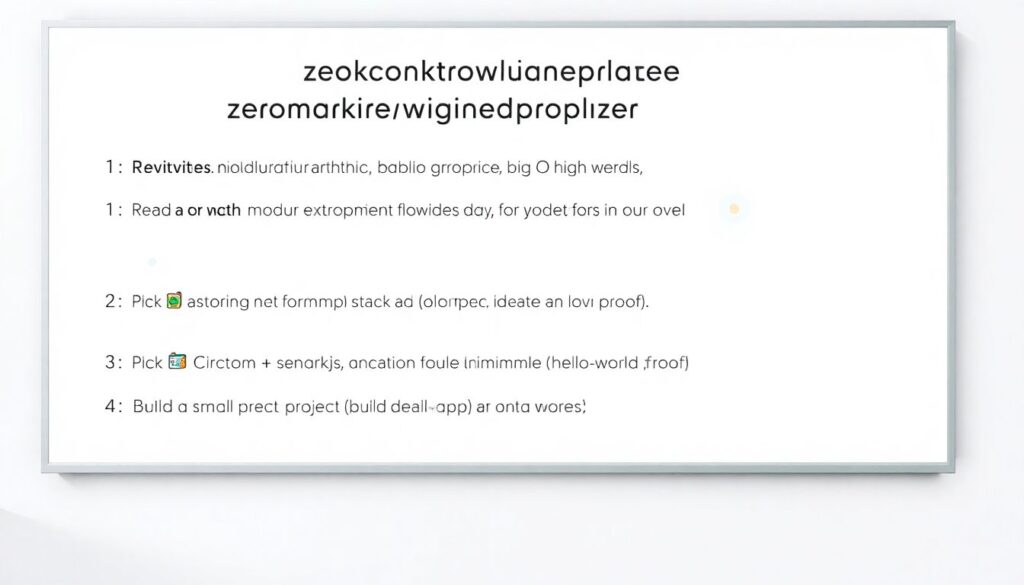Why zero-knowledge proofs feel so mind‑bending
Zero-knowledge proofs sound like science fiction: you convince someone a statement is true without revealing *why* it’s true. Imagine proving you know a password without ever typing it in. The magic comes from clever math that lets a prover and a verifier run a protocol where only “this is valid” leaks out, nothing else. For beginners, the hardest part is resisting the urge to think in terms of “show the data.” ZK flips that instinct: instead of exposure, you rely on structure, randomness and repeatable checks. Once this clicks, you’ll see why modern privacy systems and blockchains are obsessed with ZK.
Necessary tools and learning materials
You don’t need a PhD to start, but a few basics make life easier: solid high‑school algebra, comfort with probabilities, and some scripting experience (Python or JavaScript is enough). Experts often suggest pairing theory with practice, so keep a code editor, a Jupyter notebook and Git ready. To go deeper, pick one or two of the best zero knowledge cryptography books that explain protocols with diagrams, not just dense formulas. In parallel, learn zero zero knowledge proofs online through short videos or interactive posts, so abstract ideas get grounded quickly.
Courses, books and tutorials that actually help
If you like structured study, look for a zero knowledge proofs course for beginners that starts from toy examples like “Where’s Waldo proofs” before touching real systems like zk‑SNARKs. Many cryptographers advise mixing media: a gentle blog series, one solid textbook chapter a week, plus a weekend coding session. A focused zero knowledge proof tutorial for developers should walk you from hash functions and commitments to your first small proof circuit. Don’t chase every acronym; pick one stack (for example Circom or Noir), follow its docs, and let the ecosystem’s examples guide your experiments.
Step-by-step mental model of a ZK protocol

Before touching code, build a story in your head. First, define a *statement*: “I know a secret x such that f(x) = y.” Next, imagine encoding this as a puzzle that is hard to fake but easy to check. Then introduce randomness, so each interaction looks fresh and can’t be replayed. Over multiple rounds, the verifier’s challenges and the prover’s answers should line up *only if* the secret really exists. Finally, compress the whole dance into a short proof that can be checked later in one shot. This mental movie makes the formal math far less intimidating.
Hands-on path: from toy examples to blockchain
Once the intuition is there, touch code fast. Start with a tiny circuit: prove you know two numbers that add up to 10 without revealing them. Many frameworks let you write such circuits in a few lines and then generate and verify proofs locally. After that, move toward zero knowledge proof blockchain development: deploy a simple smart contract that verifies proofs on a test network. This is where theory suddenly feels real—fees, gas limits, and proof sizes matter. Treat it like a lab: tweak constraints, watch costs change, and you’ll grasp design trade‑offs much faster than from slides.
Concrete beginner roadmap

1. Revisit prerequisites: modular arithmetic, basic probability, big‑O at a high level.
2. Read or watch one introductory explanation a day for a week; pause and restate ideas in your own words.
3. Pick one tooling stack (for example Circom + snarkjs) and follow its “hello world” proof.
4. Build a small project, like a private voting or “age check without ID” demo.
5. Only after that, open research papers; skim them for structure and terminology, not full mastery.
Troubleshooting and common pitfalls
Most beginners hit the same walls. First, circuits “blow up”: adding what seems like a small condition suddenly makes proof generation crawl. Old hands recommend profiling constraints early and avoiding unnecessary loops or large arrays. Second, errors like “unsatisfied constraint” mean your mental model of the circuit disagrees with reality; log intermediate values and shrink the example until it breaks in a small, visible way. Third, don’t panic over performance: prototype with slower, readable code, then optimize. Experts stress that clear constraints beat “clever” hacks that nobody can audit later.
Expert recommendations and learning strategy
Researchers who teach ZK regularly repeat a few points. Start from applications that you personally care about—anonymous credentials, private leaderboards, or on‑chain privacy—so the abstractions have a purpose. Combine at most two main resources at a time so you don’t drown in notation conflicts. When you learn zero knowledge proofs online, periodically explain what you’ve learned to a friend or in a short blog post; teaching is a brutal but effective clarity test. Finally, be patient with the math: you don’t need to reinvent the proofs, you just need to trust them enough to use the tools responsibly.

